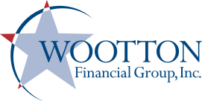This is the second post of two on the Hidden Pitfalls of IRAs and 401(k)s.
In our last post here, we discussed the penalties associated with withdrawing money early from either IRA’s or 401(k)’s. In this second post on this subject, we’ll talk about another aspect of these plans that creates problems.
The rules-based conditions regarding early IRA or 401(k) withdrawals for various purposes can also create tax issues. You are allowed to withdraw funds for education costs or buying a new home for the first time (among others, but these two tend to be more frequent).
For the latter, IRA owners can escape the 10% penalty for a withdrawal for a first-time home purchase, while a 401(k) participant cannot. Furthermore, many lenders won’t allow a 401(k) loan to qualify as a down payment in the first place. One workaround for this, if allowable under your plan, is to do a tax-free rollover of the funds needed from your 401(k) to your IRA and then take the money for the home purchase. You’ll still owe income tax but not the penalty.
The same goes for education expenses. IRA owners using their funds for higher-education costs such as tuition, books and other items that are detailed in the code will not pay the 10% early withdrawal penalty whereas 401(k) owners will. Again, consider transferring funds on a tax-free basis to an IRA and then making the withdrawal as needed.
Another area of common misunderstanding is that of required minimum distributions (RMD’s). The IRS requires that IRA and 401(k) account owners begin mandatory distributions in the year they turn 70.5. They can defer the first-year distribution till April 1 of the following year but they then must take the first and second-year distribution in the same second year. Can you say “tax planning needed”?
There is a caveat here, however, for 401(k) owners. For the 401(k) account where you are still employed at 70.5 or older, you don’t need to take an RMD unless you own more than 5% of the company. You must still take RMD’s from any external IRA’s but not from the company plan where you are still employed and under 5% ownership. Once you retire (after 70.5), your first RMD due on the 401(k) account is due by April 1 the year following retirement.
Some 401(k) plans allow for other IRAs to be rolled into them and thus older employees who are still working can delay their RMD’s till retirement. However, the allowance of this is plan specific and not always permitted. Furthermore, it’s not always cut and dry from many perspectives as to whether this would be a beneficial move to the employee other than purely from a tax perspective. You should never let the tax tail wag the retirement dog.
I often get asked it’s a good idea to borrow from one’s retirement plan. Some, but not all, 401(k) plans allow participants to borrow. Competitive interest rates can be attractive and offer better terms than other consumer debt lenders. Conversely, borrowing against your IRA is not allowed, and doing so will terminate the account causing all kinds of trouble you really don’t want.
Although these two articles aren’t comprehensive in covering all the issues with IRAs and 401(K)’s that can get you in trouble, I hope this overview gives you a better understanding of the differences in your retirement accounts and some of the pitfalls you should avoid.
We want to help you find clear direction for your retirement. We offer personal fiduciary planning and investment services as well as corporate fiduciary 321 services to help companies properly design and implement corporate retirement plans in the best interest of their participants. Let us know how we can help you!


